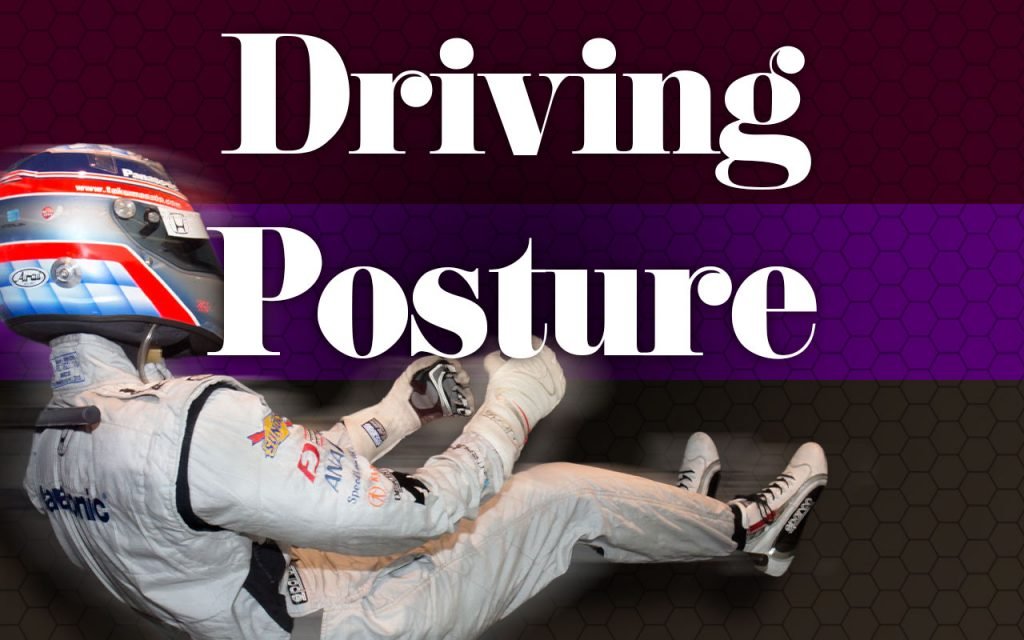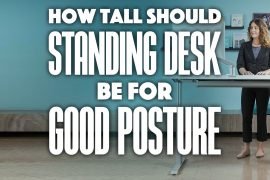[Updated on 1 May 2024] Do you drive? In this time and age, you probably do. Many of us spend a decent amount of the day commuting to and from work. And according to statistics, the average one-way commute is about 30 minutes in North America, that’s a full hour of your day spent driving. You might not know this, but its enough time to develop poor movement habits and posture. In this article, you will learn how you can improve posture while driving.
Keep reading to find out more about improving your body posture while driving and why it is important.
What is the posture?
Table of Contents
Posture is how you hold your body. There are two types of posture. Dynamic posture is how you hold your self as you run, walk or bend over to pick something. Static posture, on the other hand, is how you hold yourself when you are sleeping, seated or standing. Its how you hold your body while in a stationary position. Having a good static and dynamic posture is very important.
So, what is good posture?
Your grandma has probably asked you to sit up straight, and its for a good reason. According to Tyler R. Koski, MD Northwestern Medicine Spine Center, the goal behind having a good posture is to minimize the strain on your spine and its supporting muscles ligaments and tendons. Good posture involves holding your body upright against gravity while sitting, standing, walking or lying.
 Proper posture can help:
Proper posture can help:
- Reduce the abnormal wearing of joint surfaces that result in arthritis
- Prevents your spine from getting stuck in abnormal positions
- Keeps your joints and bones in proper alignment to improve muscle use
- Improves your structural appearance
- Prevents muscle pain and backaches
- It Prevents overuse and strain problems
- Prevents fatigue since your muscle will be used efficiently
Tips To Improve Posture
Good posture is vital while driving. Keeping your spine in a proper position helps prevent neck, back, and hip problems. So, what constitutes bad posture that will need correction?
- A rounded lower back
- Forwardly extended neck
- Slouched pelvis
- Slouching with shoulders hunched forward
A combination of four of these poor postures could lead to issues much worse than muscle and back pains. The following are tips that will help improve your posture while driving.

Make sure your seat is adjusted high
Adjusting your seat high helps put your pelvis in the correct neutral position. It’s important that your seat is high for easy adjustment. Make sure your head doesn’t hit the roof though. Also, make sure that your feet reach the pedal, and you have a clear view of the road. If your seat is adjusted low, you will end up with a rounded back and a slouched pelvis. This position magnifies the hunched posture.
Ensure your elbows are close to your body
Flaring out your elbows causes your shoulders to hunch. It’s important that they are as close to your body as possible. At this position, they are neutral, and it puts less stress on your arm. Also, avoid resting your arm at the side of the window. It forces your elbows to flare out; this is something you want to avoid.
Use a Lumbar Support
Most modern automobiles come fitted with lumbar support in the seat. They can be adjusted to suit the shape of the driver’s back. The main function of lumbar support is to maintain your lower packs natural arch while driving. It also prevents rounding of the back. If your car doesn’t have lumbar support, you could improvise by using a pillow behind your lower back.
Limber Up
Limber Up every time you hit a red light. Stretch and shake your arms and legs. Adjust your sitting position. Massage your neck and legs. Squeeze your shoulder blades together and hold the position for up to ten seconds. To avoid mishaps, ensure your vehicle is engaged in neutral.
Stretch your body when you get to your destination
When you finally get to your destination, stretch every limb. If possible, do something close to the yawn wake-up action. Focus the feeling on your front muscles of your body. They are the most strained when you drive for long hours.
Practice these tips regularly to protect your back and prepare your body for lengthy drives in heavy traffic.
What is the best sitting position while driving?
 The correct driving position will not only improve your safety on the road, but it will also improve your driving, helping you maneuver more efficiently.
The correct driving position will not only improve your safety on the road, but it will also improve your driving, helping you maneuver more efficiently.
Where should I position my legs?
The best driving position is to sit up straight keeping your shoulders against the seat back. Ensure you fully depress the clutch and brake pedals with your feet and with the pedal depressed, adjust your seat forward to a point where your legs are slightly bent. Make sure your legs are never fully straight when your drive. Straight limbs are prone to break or fracture during a collision. Adjust your steering wheel to make the instrument cluster visible without moving your head.
Arms and back
Ensure your wrists are rested on your steering wheel when you drive. In case your shoulders lift off the seat, you need to adjust them. When driving your shoulders need to be against the seat, and your wrists well rested on the steering wheel.
This adjustment and distance while driving ensure your arms never straighten and always have a slight bend in them.
Watch your hands
Quarter to three positions is the new ten to two position while driving. Ensure your hands are on the wheel at the quarter past three positions. This position is safer since you do not obstruct the driver airbag. It also gives you more control when maneuvering.
How do I reduce slouching while sitting?
 Busy schedules and modern-day comforts have made it exceptionally easy to slouch. Slouching over a long period can cause major health problems. Some of the common problems include pulled muscles, headaches, and back pain. Extensive slouching leads to musculoskeletal stress on both your vertebrae and discs between the vertebrae. Here are a few simple steps to stop slouching:
Busy schedules and modern-day comforts have made it exceptionally easy to slouch. Slouching over a long period can cause major health problems. Some of the common problems include pulled muscles, headaches, and back pain. Extensive slouching leads to musculoskeletal stress on both your vertebrae and discs between the vertebrae. Here are a few simple steps to stop slouching:
Identify a good driving posture
Keep a good form while driving. Your body has natural curves, and having a good posture promotes it. Having a good posture entails keeping your shoulders back, chest open and your back straight and tall. As your drive. You will feel your head move back as well. This posture opens your chest and tucks your abdomen muscles.
Check your posture
Standing against a wall is the best method to check your posture. Your shoulder blades, head, and buttocks need to touch the wall. Your heels should be about 2 to 4 inches away from the wall. Run the palm of your hand along the space at your lower back. If you are in a correct standing posture, your hand will fit in the area. In case your hand doesn’t fit, your body is hunched too far forward, you need to push your shoulders back.
How can I Improve my posture while driving?
 Just as your sitting posture is important at work, it is equally important while driving. Sitting in your car for long periods will aggravate hip and back problems. Modifying your posture while you drive will go a long way in making your driving experience more comfortable while at the same time improving your health.
Just as your sitting posture is important at work, it is equally important while driving. Sitting in your car for long periods will aggravate hip and back problems. Modifying your posture while you drive will go a long way in making your driving experience more comfortable while at the same time improving your health.
- Buy a car that fits your body dimensions. It’s important to get seats that allow you to adjust the angle and height independent of one another. It also needs to have an adjustable steering wheel and backrest that stops at your shoulder height.
- Ensure that you have ample space between the back of your knees and the edge of the seat and still maintain a comfortable driving position.
- Place a rolled-up towel behind your back if your car doesn’t have lumbar support. Ensure you don’t have any objects in your back pocket to sit level.
- Ensure your seat is as close to the steering wheel as you can to maintain a proper back curve. Your knees need to be even with or higher than your hips while seated.
- Use different driving positions and change them frequently to avoid being in the same one for a long time. Sitting in the same position often cause discomfort, even if it’s a good posture.
- Use both hands when steering except when you need to shift gears. Change hand positions frequently; it helps increase blood circulation preventing fatigue.
In case you have tried to correct your posture, and you feel like you are heading nowhere, or it’s causing more pain, it’s important that you visit a doctor. According to health experts, physical therapy is very helpful when it comes to getting you where you need to be. Hope this piece helps improve your driving posture, and hopefully makes your daily commute less strenuous. Happy driving!
Best Stretches for Drivers
It’s beneficial to stand and stretch regularly, but you can also do stretches while driving or riding in a car. Always keep your eyes on and focus on the road to avoid getting distracted.
Neck Stretch
- Hold for five seconds, then repeat on the other side. Perform this stretch two to five times. Keeping your gaze forward, slowly tilt your head to one side and bring your ear toward your shoulder.
- Turn your neck to each side and hold for five seconds, or stretch your head forward to touch your chin to your chest when stopped.
Shoulder Stretch
- Raise your shoulders as high as you can, hold for a few seconds, then release and repeat.
- Slowly rotate your shoulders while facing forward to reduce tension.
Back Stretch
- Slowly arch your lower back by tilting your pelvis forward, moving away from the seat. Hold this position for up to five seconds, then return to a flat position against the seat back.
FAQ’s
Q1. Why is good posture important while driving?
Sitting with good posture while driving is key to avoiding back, neck, and shoulder pain. It ensures proper spinal alignment, reduces fatigue, and enhances comfort and concentration during long drives. Also, good posture helps you react quickly if there’s an emergency.
Q2: What is the correct seat position for optimal driving posture?
Adjust your seat to slightly bend your knees and align with your hips to achieve the correct seat position. Please make sure your back is comfortably supported by the seat back, and align your head perfectly with the headrest for maximum comfort. You can reach the pedals without stretching and comfortably grip the steering wheel with your elbows slightly bent.
Q3: How should I adjust my mirrors to maintain good posture?
After setting your seat position, ensure your mirrors are properly aligned. Your rearview mirror should offer a clear view straight behind you, eliminating the need to turn your head. Adjust your side mirrors to see both the edges of your vehicle and the lanes next to you with minimal head movement.
Q4: What can I do to support my lower back while driving?
Try using a lumbar support cushion or adjusting the built-in lumbar support in your car seat if it is available. This covers the natural curvature of your spine to reduce the lower back pain risk. If you lack lumbar support, placing a rolled-up towel at the small of your back can also be beneficial.
Q5: How often should I take breaks to maintain good posture on long drives?
For long drives, it’s recommended to take a break every 1-2 hours to ensure safety and comfort. Take this time to stretch, walk around, and realign your posture. This helps prevent stiffness and reduces the risk of pain from prolonged sitting.
Q6: Are there specific exercises that can help improve my driving posture?
Sure, exercises that strengthen your core, back, and neck muscles can really help improve your posture. You can do simple stretches and exercises like shoulder rolls, neck stretches, and lower back stretches during breaks. Good posture habits outside of driving improve driving posture.
Q7: Can adjusting the steering wheel help with posture?
Adjust the steering wheel for a comfortable grip without straining your arms or shoulders. Ideally, the center of the wheel should line up with your chest, not your face, and you should keep a slight bend in your elbows.
Q8: What role do car ergonomics play in driving posture?
The ergonomics of a car, including the design and adjustability of the seat, steering wheel, and pedals, significantly influence driving posture. Vehicles equipped with adjustable seats, lumbar support, and tiltable steering wheels enable you to maintain an optimal driving posture. Consider these features for comfort and support when buying or renting a car.
Q9: How can I avoid slouching while driving?
Adjust your seat back to a comfortable 100-110-degree angle to support your spine and avoid slouching. Keep your back against the seat and use lumbar support when needed by maintaining proper posture. Regularly adjust your posture, especially on long trips.
Q10: Are there any gadgets or tools that can help improve my driving posture?
Several gadgets, like ergonomic seat cushions, lumbar supports, and posture correctors, are designed to improve driving posture. Plus, some modern cars now have cool ergonomic features like adjustable seats with memory settings and built-in lumbar support, making your drive more comfortable and improving your posture.
Conclusion
Maintaining good posture is important for health, as the negative effects of poor posture often become apparent only after many years. Considering how much time we spend in cars, it’s really important to prioritize good driving posture.
In the short term, good posture can boost your driving skills and reduce the risk of accidents and injuries. Over time, you can avoid problems like misaligned joints and pinched nerves, just like you benefit from good posture when standing or sitting.








